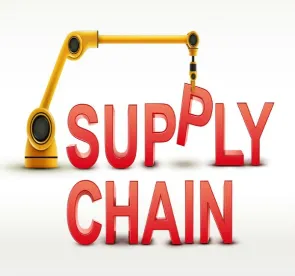There are very few problems in the supply chain that can cause more headaches for manufacturers than a financially troubled supplier. Financially troubled suppliers threaten the continuity of supply as they are often unable to meet production requirements, due to inability to procure components/raw materials, loss of workforce and other operational issues. Financially troubled suppliers also are commonly associated with quality issues as the supplier loses its best employees and may begin to cut corners and capital expenditures on maintenance in an effort to remain afloat. These problems are particularly acute in industries where manufacturers are unable to quickly change their sources of supply. Most notably, in the automotive industry, validation and testing of a new supplier can take months, while nearly all manufacturers rely on single-source relationships that operate on a “just-in-time” basis, meaning that manufacturers may only have days, or perhaps even hours, of inventory on hand if its supply chain is disrupted. Compounding these problems is the fact that, once the troubled supplier concerns are resolved, it is often difficult or impossible for a manufacturer to obtain any meaningful recovery because the supplier in question has filed for bankruptcy or otherwise ceased operations.
As with most problems, early recognition is key to mitigating the risks posed by a financially troubled supplier. Effective due diligence and vetting before sourcing a supplier can go a long way toward avoiding problems in the future. For existing suppliers, there are several “red flags” that manufacturers should watch for as an indication of a troubled supplier. Although not intended as an exhaustive list, examples include:
-
Missed, late, or short shipments – While a single shipping issue may not be cause for alarm, a pattern of missed, late, or short shipments can be indicative of larger operational issues.
-
Unprofitable operations – Most manufacturers have in their portfolio some programs that are not profitable. However, if those programs are of sufficient magnitude or number, they can pose a risk to the viability of a supplier.
-
Stretched/missed payments to vendors – Often, the first visible sign of a troubled supplier will be rumors that a supplier is stretching, or even missing, payments to its vendors. Vendors may even call the supplier’s customers directly. While there may be legitimate reasons that a particular vendor has not been paid, an inability to pay vendors more generally is a significant red flag.
-
Requests for commercial concessions – Troubled suppliers often come to their customers seeking commercial concessions, including increased prices and shorter payment terms. Any manufacturer receiving such a request will be well advised to consider the basis for the request and whether it may be indicative of a larger concern with the health of the supplier.
-
Quality issues – As noted above, suppliers that are facing financial difficulty are often associated with quality problems. Such suppliers often experience a “brain drain” as their best employees look for more stable situations. They may also experience high-turnover and have difficulty staffing their full capacity. Lack of resources, coupled with pressure to cut costs can often lead (consciously or unconsciously) to cutting corners, deferred maintenance and rushed work, all of which has the potential to create significant quality problems.
When such red flags appear, there are a variety of legal tools that manufactures can use to better assess the situation and determine whether or not a problem truly exists. For example, many manufacturing contracts provide buyers with some form of audit and inspection rights, which can be leveraged to get a better view of the supplier’s financial health. Absent an express contractual right, manufacturers also can exercise their rights under the Uniform Commercial Code to request “adequate assurance” regarding a supplier’s ability to perform its contractual obligations.
Early identification of a troubled supplier is key. The earlier a potential problem is identified, the more time manufacturers give themselves to mitigate their risks and prepare contingency plans. This can translate into avoiding thousands, and in some cases, even millions of dollars in potential costs.




 />i
/>i
